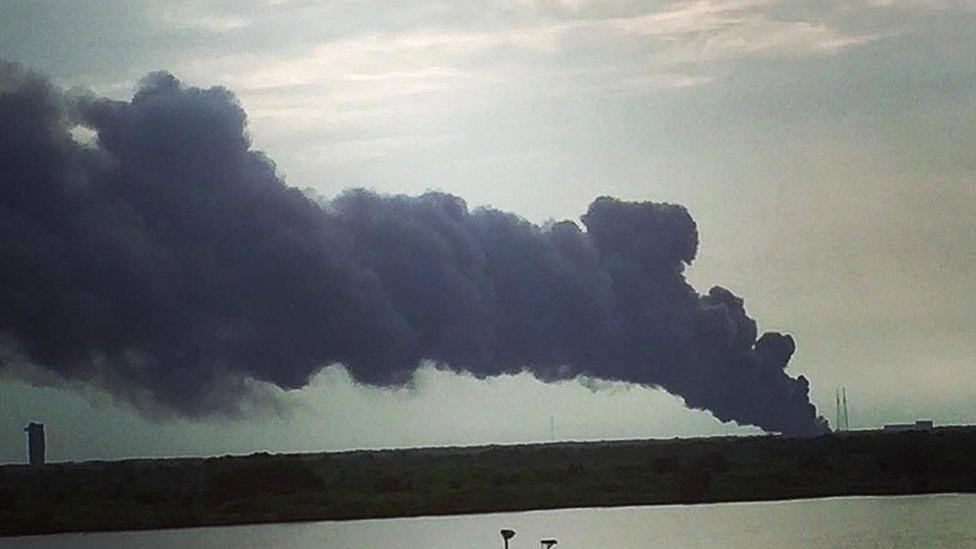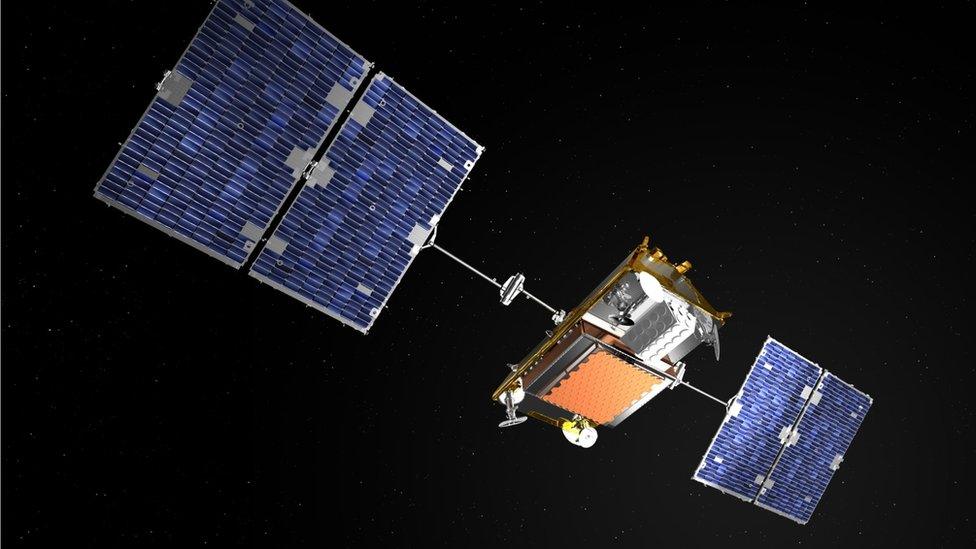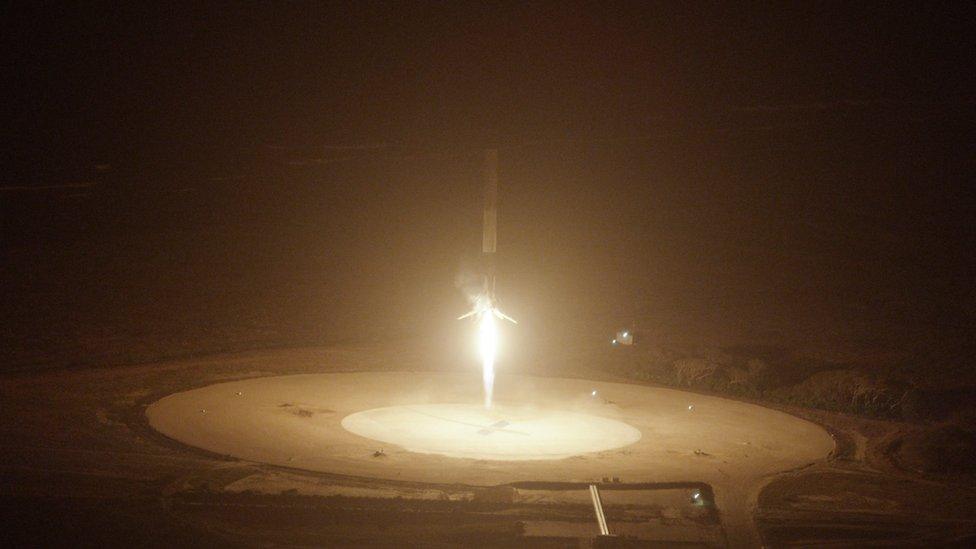Falcon blast to reverberate across space industry
- Published

A thick pall of smoke drifts across the Cape after the explosion
It is usual for SpaceX to do a "hot fire" test a few days before a launch.
The procedure involves holding down the Falcon 9 on its launch pad and then igniting its Merlin engines.
The test only runs for a few seconds, but it tells engineers that all nine engines at the base of the vehicle, and the sub-systems that support them, are functioning normally.
If the test throws up no anomalies, the Falcon is given the green light to go ahead with its mission.
Clearly, though, on this occasion, something went catastrophically wrong. The entire rocket and its satellite payload were destroyed in an explosion.
Company CEO Elon Musk said the problem - whatever it was - occurred during the operation to fill the rocket with propellant, so the event happened just prior to the test ignition.
Remarkably, the lightning towers surrounding the pad stayed standing in the face of the blast, and so did the erector tower that is used to feed cables and fluids to the rocket.
Undoubtedly, though, Launch Complex 40 as it is known, will have suffered significant damage. Twisted and bent metal was visible to long-range cameras.
But the repairs to the pad are only a part of SpaceX's immediate problems.
Its launch schedule will now be put on hold, perhaps for many weeks, as engineers try to understand what happened and to correct any procedural errors and hardware failures.
That is going to be a headache for SpaceX's many customers who are waiting patiently for a ride.

The launch pad in Florida will no doubt have suffered significant damage
The Amos-6 satellite that was lost in the explosion is just one spacecraft in a very long line of platforms that have contracts to fly on the Falcon.
They have little option but to accept the delay; you cannot very easily swap rockets like you can swap trains.
Most of the backlog is made up of commercial payloads, and every extra month these expensive satellites stay on the ground will hit their operators' revenues.
Consider customers like Iridium - one of the main sat-phone providers. It was due to send up the first 10 spacecraft in its new constellation of satellites on a Falcon later this month. Iridium has big loans that need to be serviced.
At Nasa, too, they will be frustrated. The agency sends cargo to the space station on Falcons, and the next freight mission was scheduled for November.
More concerning however is the shadow this incident casts over the issue of human transportation.
SpaceX has a contract to use its Falcon to take astronauts to the International Space Station (ISS). Manned test flights were expected in the next 18 months.
Is that timeline realistic now? This is the second accident involving a Falcon inside 15 months, after a vehicle broke up in flight in June 2015.
The Falcon's performance will have reverberations with the US military also.
SpaceX is working hard to convince the Pentagon that it has a reliable rocket system that can be entrusted with high-value national security missions. That job just got a little harder.

Companies like Iridium have little choice but to sit out the delay
Setbacks are inevitable in this business, however, and SpaceX has shown before that it can bounce back.
Customers and commentators alike have warmed to the company and its charismatic leader, Elon Musk.
They have been impressed with the new ideas that SpaceX has tried to introduce - most notably the attempt to make the Falcon cheaper by making it re-usable.
Just this week we saw the Luxembourg-based satellite operator SES, one of the biggest such companies in the world, announce that it would be the first to use one of these "second-hand rockets".
But it's difficult to run a routine operation and innovate at the same time.
If June 2015 is any guide, SpaceX will likely park some of its future plans while it gets everyone in the company to focus on the fundamentals to get the Falcon flying again as soon as possible.

SpaceX is an innovator and has been flying Falcon boosters back to Earth to be used again